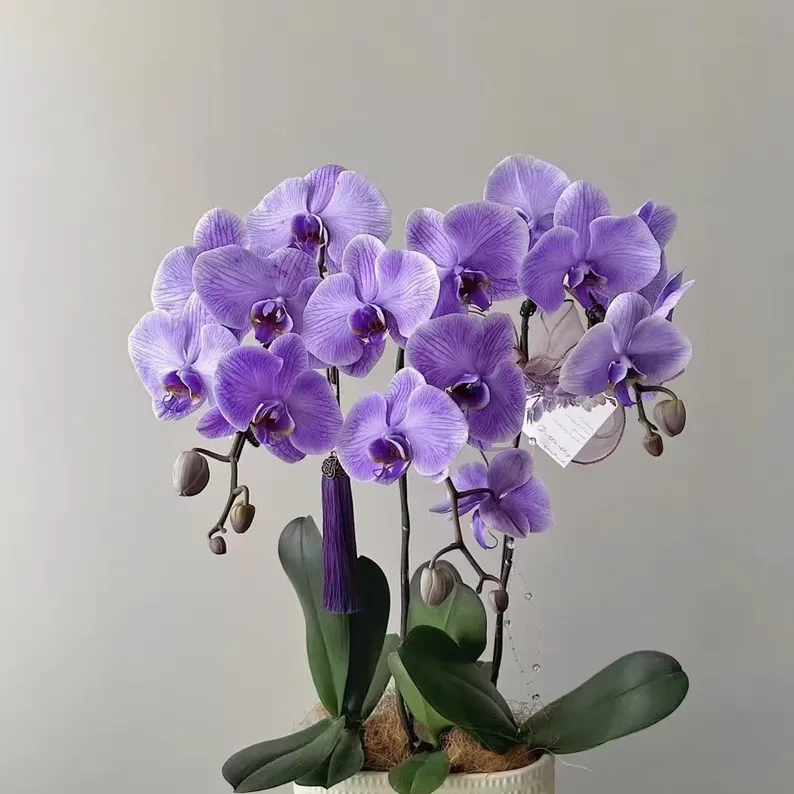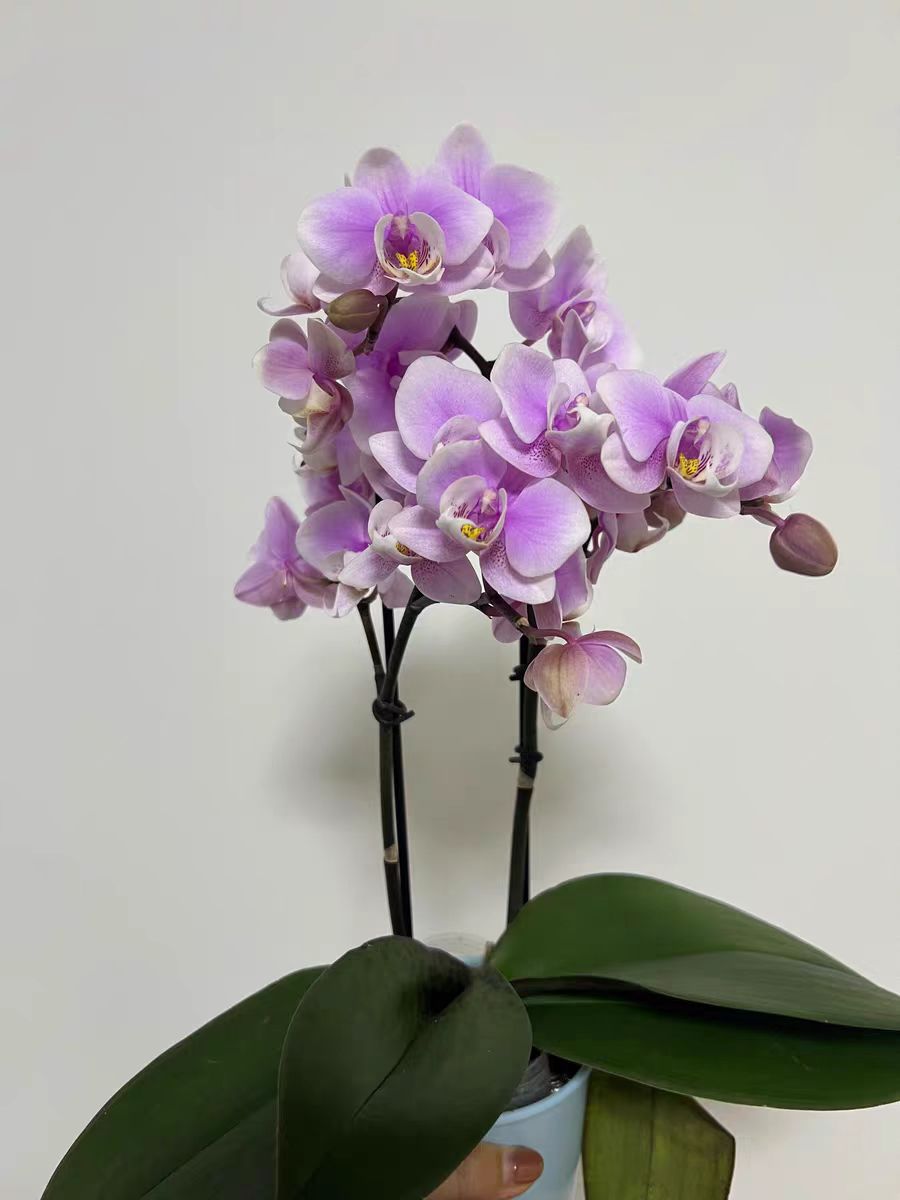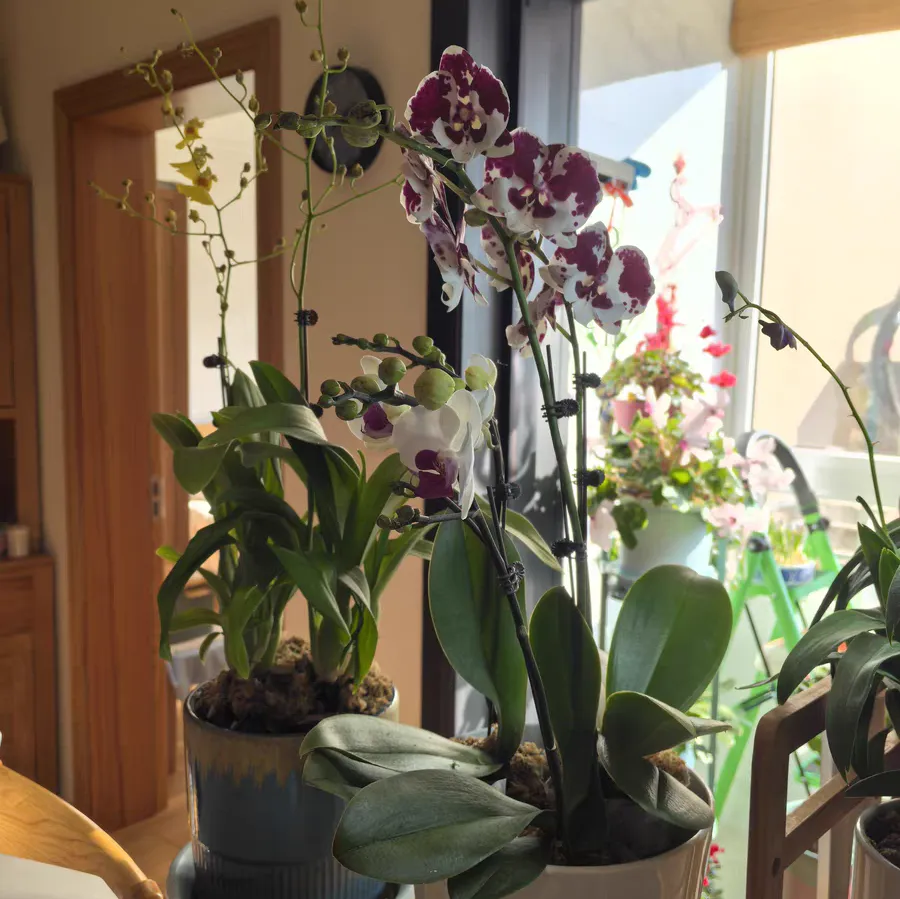Recently, the temperature has dropped sharply, and many friends are anxious about the cold - exposure situation of their Phalaenopsis at home. Today, I'd like to share with you the remedies and maintenance methods for frost - bitten Phalaenopsis, hoping to help you and bring our Phalaenopsis back to life.
Judge the Degree of Frostbite
When you find that your Phalaenopsis is not in good condition, first stay calm and carefully identify the degree of cold - exposure. If only the edges of the leaves look slightly withered and the color has changed a bit, the problem is not serious, which is a mild case of cold - exposure. If a large area of the leaves becomes soft, droops, and even shows water - soaked patches, it is a moderate case of cold - exposure. The most worrying situation is when the whole plant looks listless and the stem is also damaged, which indicates severe cold - exposure.
First - Aid for Mild Frostbite
For Phalaenopsis with mild cold - exposure, immediately move it to a warm indoor environment with a room temperature maintained between 15 and 25 °C. Remember not to place it directly next to the heater or in the air - conditioner outlet, as the large temperature difference may harm the Phalaenopsis. At the same time, reduce the frequency of watering. Just keep the potting soil slightly moist. If the potting soil is too wet, the cold - exposed roots are likely to rot. When the air is particularly dry, you can use a spray bottle to sprinkle a little water around the plant to increase the air humidity, but avoid spraying directly on the leaves.
First - Aid for Moderate Frostbite
For Phalaenopsis with moderate cold - exposure, in addition to moving it to a warm environment, cut off the severely cold - exposed leaves. Start pruning from the base of the leaves and smear an appropriate amount of carbendazim powder on the wound for disinfection to prevent infection. Then, stop fertilizing and wait for it to slowly regain its vitality. If you have rooting powder at home, dissolve it into a solution and water the Phalaenopsis with an appropriate amount to stimulate root growth.
First - Aid for Severe Frostbite
Facing Phalaenopsis with severe cold - exposure, the rescue is indeed difficult, but we should not give up easily. Thoroughly remove all the cold - exposed parts, including leaves and stems. If the stem is not completely frozen, cut it into small sections, with each section retaining 2 - 3 bud points. Place them in a ventilated and cool place to dry the wounds, then wrap them with moist sphagnum moss and put them in a warm environment to promote sprouting. If you're lucky, new plants may still be regenerated.
Key Points of Follow - up Maintenance
Regardless of the degree of cold - exposure of the Phalaenopsis, pay attention to light management during the recovery period. Avoid direct sunlight exposure and place it in a place with bright diffused light. When it starts to sprout new leaves and roots, gradually increase the light exposure time. Fertilization also needs to be done carefully. Wait until the plant has fully recovered, and then apply thin fertilizers frequently to supplement its nutrients.
In conclusion, as long as we take good care of it, there is still a great hope for the frost - bitten Phalaenopsis to bloom again!
The manifestations of Phalaenopsis being frostbitten

Share with
Tagged in :




Leave a Reply